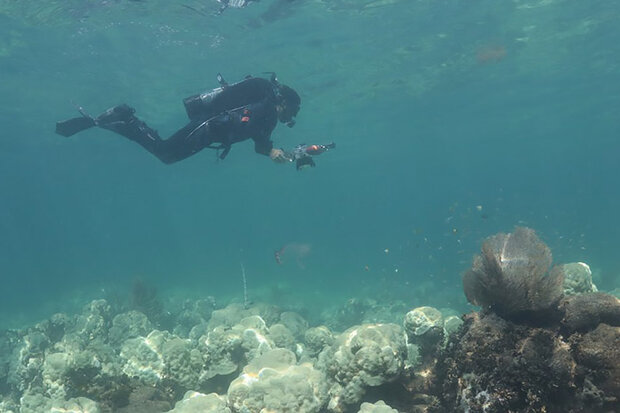NOAA scientists find Cheeca Rocks reef completely bleached


In late July and early August 2023, researchers found corals at Cheeca Rocks badly bleached. Credit: NOAA AOML
The growing concerns of coral bleaching due to the ongoing marine heat wave across South Florida, the Gulf of Mexico, and the greater Caribbean led scientists at NOAA’s Atlantic Oceanographic & Meteorological Lab (AOML) to return to Cheeca Rocks on July 31st and August 1st, 2023.
As an inshore reef within the Florida Keys National Marine Sanctuary and a vital long-term climate monitoring site for the National Coral Reef Monitoring Program, Cheeca Rocks demonstrated persistence in the wake of the 2014 and 2015 bleaching event and is known to have some of the highest coral coverage compared to surrounding offshore reefs, but what NOAA scientists found was bleak.
“I’ve never seen anything like it,” said Ian Enochs, Ph.D., Research Ecologist and Lead of AOML’s Coral Program. “The corals at our primary climate monitoring reef site, Cheeca Rocks, are completely bleached,” he explained. “No single coral is untouched. It’s shocking.”
It is essential to note that bleaching does not mean mortality. Corals are able to recover from a bleaching event as long as the physical stress, in this case sustained, above average sea surface temperatures, is reduced to a level that allows the algal symbiont population to reestablish itself.
Related story: NOAA and partners race to rescue remaining Florida corals from historic ocean heat wave